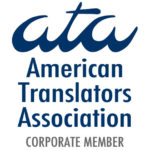Whether you’re just starting to dabble in the world of foreign language study or you’re an accomplished polyglot with five languages under your belt, the Spanish Language resources you’re looking for are merely a click away. From beginner language forums to college-level courses, the Internet offers a wealth of language resources that are available for free. Explore the following 10 free online resources for Spanish language learners:
Notes in Spanish This site provides a series of podcasts using real-world language and scenarios, ranging from beginner level through to advanced. Notes in Spanish also features a very active blog with additional content such as videos. Note: Many discussion topics focus exclusively on vocabulary and grammatical constructions used in Spain.
SharedTalk Owned by the well-known language-learning software company Rosetta Stone, SharedTalk offers you the opportunity to chat live (either text or voice) with native Spanish speakers from around the world.
Massachusetts Institute of Technology Through MIT’s OpenCourseWare program, the university provides course materials for a number of Spanish language and literature courses that can be downloaded completely free of charge. MIT’s language offerings look to develop an understanding of vocabulary, grammar, and communication skills using various assignments, activities, and other resources.
BBC Languages – Spanish The BBC offers a choice of two different 12-week beginner courses: “Spanish Steps” or “Mi Vida Loca.” The site also features handy phrases to use while on vacation including food and drink, shopping, and even slang and swear words.
About.com: Spanish Language Look to About.com for comprehensive grammar lessons, vocabulary lists and tips for increasing your Spanish vocabulary, as well as a cultural section that provides insight into the customs of various Spanish-speaking countries.
StudySpanish.com StudySpanish.com This site features sections on Spanish pronunciation (with audio clips), grammar, vocabulary and verb drills, plus quizzes to help you gauge your progress.
Bowdoin College Bowdoin College With content that’s geared more toward advanced learners, at Bowdoin College’s site you’ll find an online Spanish textbook that addresses advanced grammatical concepts, a style checklist for Spanish composition, and articles and general resources about Latin America written in Spanish.
Spanish Language and Culture with Barbara Kuczun Nelson Spanish Language and Culture with Barbara Kuczun Nelson Brush up on your language skills with study modules featuring videos focusing on Spain and Latin America, as well as grammar exercises.
WordReference WordReference This site offers an extensive online dictionary, a verb conjugation tool and user forums where you can pose questions to native Spanish and English speakers about grammar and vocabulary.
Destinos Destinos A 52-part series presented as a telenovela or Spanish soap opera, the entertaining format of Destinos is sure to engage you while introducing everyday situations in Spanish.



